[English] 日本語
 Yorodumi
Yorodumi- PDB-8pvg: Structure of E. coli glutamine synthetase determined by cryoEM at... -
+ Open data
Open data
- Basic information
Basic information
| Entry | Database: PDB / ID: 8pvg | |||||||||||||||||||||
|---|---|---|---|---|---|---|---|---|---|---|---|---|---|---|---|---|---|---|---|---|---|---|
| Title | Structure of E. coli glutamine synthetase determined by cryoEM at 100 keV | |||||||||||||||||||||
 Components Components | Glutamine synthetase | |||||||||||||||||||||
 Keywords Keywords |  BIOSYNTHETIC PROTEIN / BIOSYNTHETIC PROTEIN /  Glutamine synthetase / Glutamine synthetase /  filament filament | |||||||||||||||||||||
| Function / homology |  Function and homology information Function and homology information glutamine synthetase / glutamine biosynthetic process / glutamine synthetase / glutamine biosynthetic process /  glutamine synthetase activity / glutamine synthetase activity /  ATP binding / ATP binding /  metal ion binding / metal ion binding /  cytoplasm cytoplasmSimilarity search - Function | |||||||||||||||||||||
| Biological species |   Escherichia coli (E. coli) Escherichia coli (E. coli) | |||||||||||||||||||||
| Method |  ELECTRON MICROSCOPY / ELECTRON MICROSCOPY /  single particle reconstruction / single particle reconstruction /  cryo EM / Resolution: 3.4 Å cryo EM / Resolution: 3.4 Å | |||||||||||||||||||||
 Authors Authors | McMullan, G. / Naydenova, K. / Mihaylov, D. / Peet, M.J. / Wilson, H. / Yamashita, K. / Dickerson, J.L. / Chen, S. / Cannone, G. / Lee, Y. ...McMullan, G. / Naydenova, K. / Mihaylov, D. / Peet, M.J. / Wilson, H. / Yamashita, K. / Dickerson, J.L. / Chen, S. / Cannone, G. / Lee, Y. / Hutchings, K.A. / Gittins, O. / Sobhy, M. / Wells, T. / El-Gomati, M.M. / Dalby, J. / Meffert, M. / Schulze-Briese, C. / Henderson, R. / Russo, C.J. | |||||||||||||||||||||
| Funding support |  United Kingdom, 6items United Kingdom, 6items
| |||||||||||||||||||||
 Citation Citation |  Journal: Proc Natl Acad Sci U S A / Year: 2023 Journal: Proc Natl Acad Sci U S A / Year: 2023Title: Structure determination by cryoEM at 100 keV. Authors: Greg McMullan / Katerina Naydenova / Daniel Mihaylov / Keitaro Yamashita / Mathew J Peet / Hugh Wilson / Joshua L Dickerson / Shaoxia Chen / Giuseppe Cannone / Yang Lee / Katherine A ...Authors: Greg McMullan / Katerina Naydenova / Daniel Mihaylov / Keitaro Yamashita / Mathew J Peet / Hugh Wilson / Joshua L Dickerson / Shaoxia Chen / Giuseppe Cannone / Yang Lee / Katherine A Hutchings / Olivia Gittins / Mohamed A Sobhy / Torquil Wells / Mohamed M El-Gomati / Jason Dalby / Matthias Meffert / Clemens Schulze-Briese / Richard Henderson / Christopher J Russo /    Abstract: Electron cryomicroscopy can, in principle, determine the structures of most biological molecules but is currently limited by access, specimen preparation difficulties, and cost. We describe a purpose- ...Electron cryomicroscopy can, in principle, determine the structures of most biological molecules but is currently limited by access, specimen preparation difficulties, and cost. We describe a purpose-built instrument operating at 100 keV-including advances in electron optics, detection, and processing-that makes structure determination fast and simple at a fraction of current costs. The instrument attains its theoretical performance limits, allowing atomic resolution imaging of gold test specimens and biological molecular structure determination in hours. We demonstrate its capabilities by determining the structures of eleven different specimens, ranging in size from 140 kDa to 2 MDa, using a fraction of the data normally required. CryoEM with a microscope designed specifically for high-efficiency, on-the-spot imaging of biological molecules will expand structural biology to a wide range of previously intractable problems. | |||||||||||||||||||||
| History |
|
- Structure visualization
Structure visualization
| Structure viewer | Molecule:  Molmil Molmil Jmol/JSmol Jmol/JSmol |
|---|
- Downloads & links
Downloads & links
- Download
Download
| PDBx/mmCIF format |  8pvg.cif.gz 8pvg.cif.gz | 119.3 KB | Display |  PDBx/mmCIF format PDBx/mmCIF format |
|---|---|---|---|---|
| PDB format |  pdb8pvg.ent.gz pdb8pvg.ent.gz | Display |  PDB format PDB format | |
| PDBx/mmJSON format |  8pvg.json.gz 8pvg.json.gz | Tree view |  PDBx/mmJSON format PDBx/mmJSON format | |
| Others |  Other downloads Other downloads |
-Validation report
| Arichive directory |  https://data.pdbj.org/pub/pdb/validation_reports/pv/8pvg https://data.pdbj.org/pub/pdb/validation_reports/pv/8pvg ftp://data.pdbj.org/pub/pdb/validation_reports/pv/8pvg ftp://data.pdbj.org/pub/pdb/validation_reports/pv/8pvg | HTTPS FTP |
|---|
-Related structure data
| Related structure data |  17965MC 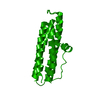 8pv9C  8pvaC 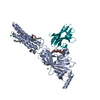 8pvbC 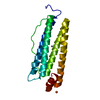 8pvcC 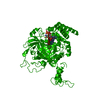 8pvdC 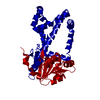 8pveC 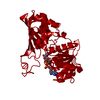 8pvfC 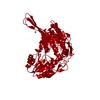 8pvhC 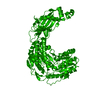 8pviC 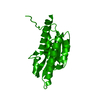 8pvjC M: map data used to model this data C: citing same article ( |
|---|---|
| Similar structure data | Similarity search - Function & homology  F&H Search F&H Search |
- Links
Links
- Assembly
Assembly
| Deposited unit | 
| ||||||||||||||||||||||||||||||||||||||||||||||||||||
|---|---|---|---|---|---|---|---|---|---|---|---|---|---|---|---|---|---|---|---|---|---|---|---|---|---|---|---|---|---|---|---|---|---|---|---|---|---|---|---|---|---|---|---|---|---|---|---|---|---|---|---|---|---|
| 1 | x 12
| ||||||||||||||||||||||||||||||||||||||||||||||||||||
| Noncrystallographic symmetry (NCS) | NCS oper:
|
- Components
Components
| #1: Protein |  / GS / Glutamate--ammonia ligase / Glutamine synthetase I beta / GSI beta / GS / Glutamate--ammonia ligase / Glutamine synthetase I beta / GSI betaMass: 54121.969 Da / Num. of mol.: 1 Source method: isolated from a genetically manipulated source Source: (gene. exp.)   Escherichia coli (E. coli) / Gene: glnA, c4819 / Production host: Escherichia coli (E. coli) / Gene: glnA, c4819 / Production host:   Escherichia coli (E. coli) / References: UniProt: P0A9C6, Escherichia coli (E. coli) / References: UniProt: P0A9C6,  glutamine synthetase glutamine synthetase |
|---|
-Experimental details
-Experiment
| Experiment | Method:  ELECTRON MICROSCOPY ELECTRON MICROSCOPY |
|---|---|
| EM experiment | Aggregation state: PARTICLE / 3D reconstruction method:  single particle reconstruction single particle reconstruction |
- Sample preparation
Sample preparation
| Component | Name: Filamentous form of Ecoli glutamine synthetase / Type: COMPLEX / Entity ID: all / Source: RECOMBINANT |
|---|---|
| Source (natural) | Organism:   Escherichia coli (E. coli) Escherichia coli (E. coli) |
| Source (recombinant) | Organism:   Escherichia coli (E. coli) Escherichia coli (E. coli) |
| Buffer solution | pH: 7.4 |
| Specimen | Embedding applied: NO / Shadowing applied: NO / Staining applied : NO / Vitrification applied : NO / Vitrification applied : YES : YES |
| Specimen support | Grid material: GOLD / Grid mesh size: 300 divisions/in. / Grid type: UltrAuFoil R0./1 |
Vitrification | Cryogen name: ETHANE |
- Electron microscopy imaging
Electron microscopy imaging
| Microscopy | Model: JEOL 1400/HR + YPS FEG |
|---|---|
| Electron gun | Electron source : :  FIELD EMISSION GUN / Accelerating voltage: 100 kV / Illumination mode: FLOOD BEAM FIELD EMISSION GUN / Accelerating voltage: 100 kV / Illumination mode: FLOOD BEAM |
| Electron lens | Mode: BRIGHT FIELD Bright-field microscopy / Nominal defocus max: 2000 nm / Nominal defocus min: 500 nm Bright-field microscopy / Nominal defocus max: 2000 nm / Nominal defocus min: 500 nm |
| Specimen holder | Cryogen: NITROGEN Specimen holder model: GATAN 626 SINGLE TILT LIQUID NITROGEN CRYO TRANSFER HOLDER |
| Image recording | Electron dose: 40 e/Å2 / Film or detector model: DECTRIS SINGLA (1k x 1k) |
- Processing
Processing
| EM software | Name: Servalcat / Version: 0.4.27 / Category: model refinement |
|---|---|
CTF correction | Type: PHASE FLIPPING AND AMPLITUDE CORRECTION |
| Symmetry | Point symmetry : D6 (2x6 fold dihedral : D6 (2x6 fold dihedral ) ) |
3D reconstruction | Resolution: 3.4 Å / Resolution method: FSC 0.143 CUT-OFF / Num. of particles: 9881 / Symmetry type: POINT |
| Atomic model building | Space: RECIPROCAL |
| Atomic model building | PDB-ID: 7w85 Accession code: 7w85 / Source name: PDB / Type: experimental model |
 Movie
Movie Controller
Controller












 PDBj
PDBj

